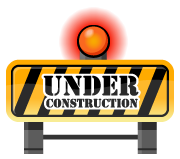In our Master’s program this week our assignment is to address the great idea and current hot topic of INQUIRY SCIENCE…. Here’s some answers to the thought provoking questions related to the Donovan and Bransford book How Students Learn, Science in the Classroom.
My first question was this:
Explain the purpose of Box 9-3 “Evaluating the Methods Used in an Experiment” (pp.408-409). How does the example provided in this section support the second principle, “Knowledge of What It Means to Do Science?” Describe a science investigation that you have taught or conducted. How does this investigation support or conflict with the second principle, “Knowledge of What It Means to Do Science?”

In Box 9-3, the case here is an experiment that people were given to study and critique on. The general idea of what happened in the experiment was that scientists did a trial based on a hypothesis of their own about frogs and their environments. After explaining what the scientists did the audience who this was addressed to was then asked to make remarks on the experiment, both the good and the bad. The answers that they came up with highlighted all the procedural aspects of the experiment; commenting on the time frame of it, the controls used, the variable, and so forth (Donovan & Bransford, 2005). The one thing that the audience did not consider was what you could call the “big picture” of it all. People thought that the results of the experiment were either true or false based on what was done specifically in the experiment. The one thing that they did not think of was the entire life cycle of the frogs in the experiment. They did not connect it to what they knew about the ways of life and think of the experiment in a larger context of how a species survives and reproduces. They were thinking of the problem as literally what it was, they did not as the authors Donovan and Brandford say, “know what it means to do science” (Donovan & Bransford, 2005).
The authors chose this example to highlight what could have been learned or thought of had the participants in the study been introduced to it in a different light, or by using inquiry science. Going through science by simply following a “recipe”  or only worrying about the specific steps and factors doesn’t allow students to think in the great scheme of things (Donovan & Bransford, 2005). When it comes down to it, science is an interconnected web of ideas and processes. When teachers present topics to their students as individual units they cannot see that bigger picture. They simply memorize the lesson at hand and move on to the next one. It is found that the majority of students have more of a tendency to forget what they specifically learned because it has no meaning or connection to them.
or only worrying about the specific steps and factors doesn’t allow students to think in the great scheme of things (Donovan & Bransford, 2005). When it comes down to it, science is an interconnected web of ideas and processes. When teachers present topics to their students as individual units they cannot see that bigger picture. They simply memorize the lesson at hand and move on to the next one. It is found that the majority of students have more of a tendency to forget what they specifically learned because it has no meaning or connection to them.
The idea of inquiry-based science is that students are not simply memorizing the boring, basic facts of science. It is that students are questioning, exploring, connecting to the ideas of science and keeping what they learned in their knowledge base, not forgetting it after the next test. Students need to use the “imagination” piece that Einstein spoke of not only to learn to question and grasp the big pictures to better understand the nitty gritty, but also to make them more enthusiastic learners, to make science more enjoyable.
In my own classroom, I too am guilty of using this “recipe” or “lockstep” kind of science that we use to teach concepts. In a lesson we did the other week we discussed the ways that animals stay safe in their environments. We talked about the ideas of camouflage, warning colors, and more. Overall, the students took the concepts in well. They viewed the pictures and examples of the different ways the animals would hide or protect themselves and it was short and sweet. Did this lesson go along with the idea of “Knowledge of What It Means to Do Science”? I don’t think so. The main problem that I and other teachers have discussed with introducing inquiry science is that the time for it is limited. In a week we only have about an hour of science, spread out over 5 days, at best. Is this enough time to fully give students what they need? Is our curriculum designed and laid out to promote the ideas of inquiry? These are things that I have to think hinder the use of inquiry-based lessons in the classroom. I do think that as time goes on, and as the focus on inquiry science grows across the nation, these things will change. The change though must start with us, in the classroom, every day. That is something my colleagues in my Masters program and myself are realizing we need to work on.
My second question was this:
This chapter highlights the notion that students bring reasonable and productive understandings of everyday phenomena to the classroom but that sometimes these preconceptions can be limited or incorrect. One example the authors provide is that “properties are generally believed to belong to objects rather than to emerge from interactions” (Donovan & Bransford, 2005, pg. 399). For instance, many of us think of color as an inherent property of objects as opposed to a result of light reflection or emission from objects.
Provide another example of a preconception that students bring to the classroom. Where does that preconception come from? What is a more productive way of thinking about that particular concept? Describe a pedagogical approach to teaching the concept that would reflect Donovan and Bransford’s first principle, “Addressing Preconceptions.”

Going through an undergraduate education program, the one thing that emerging teachers will hear over and over again is to relate the topic of study to what children already know. Teachers try everyday to make connections in the classroom to their own students’ lives and use their background knowledge to build upon a new topic. While the general idea of having children relate is great in theory, there is the common notion that children also have incorrect preconceptions that they bring to the classroom too. The difficulty then becomes not only addressing and fixing these preconceptions but also just trying to figure out if students have any to begin with.
In the book How Students Learn, Science in the Classroom the authors provide the example that “students believe objects to ‘be’ a certain color, and light can allow us to see the color or not” (Donovan & Bransford, 2005, pg. 399). The idea of white light and how objects either reflect or absorb different colors is not something the average student has in their background knowledge. Not only do they not know of it but their misconception stated above could hinder them in fully understanding the real reasoning if the teacher does not address it.
With both the good and the bad our students walk through the door each and every day with these ideas of what the world is and what the world does. The problem we face as teachers is extracting those preconceptions and then determining if they need to be used to build upon or taken back a step and corrected. These preconceptions come from their experiences, their observations, and even their culture as I have seen in my ESOL students and how their thinking on certain topics directly ties to the cultural practices they have in their homes.
is and what the world does. The problem we face as teachers is extracting those preconceptions and then determining if they need to be used to build upon or taken back a step and corrected. These preconceptions come from their experiences, their observations, and even their culture as I have seen in my ESOL students and how their thinking on certain topics directly ties to the cultural practices they have in their homes.
When I asked my younger brother what was one thing he had totally the wrong idea about in school when he was younger, he brought up the idea that the “sun was a planet and not a star”. To me, this seems like a logical misconception for students of a younger age to have. If I was teaching this lesson on astronomy, in particularly on stars, I would have to find a way to address this misconception. Following the path of inquiry science I would hope to open the class up with small group discussion or word splash on the question “What is a star?”. After having students share amongst themselves and then out with the whole class we could move on to defining properties of a star. After coming up with a list of attributes from more class discussion the question could switch to “what is the difference between a star and a planet?” and then further to a debate between what we would classify our sun as. In doing this, the teacher would almost hope for some of the misconceptions that the sun is a planet here because it would spark the debate with other students that know it is not. Through an authentic and relatable discussion I would hope to correct these misconceptions in my students’ minds while at the same time teaching my lesson on what a star truly is.
Everything I discussed here today, and more, are things that Donovan and Brandford suggest that we, as teachers, need to start thinking about and planning for more in order to truly advance and teach our students to prepare them for the problems of the future.
Works Cited
Donovan, M. S., & Bransford, J. D. (2005). How students learn. science in the classroom. . Washington, DC: The National Academies Press.
 reminded of my own classroom, but more of that of our physics course we are taking. The idea of initial questioning for preassessments, continuous work with the seemingly endless experiments and trials, and developing more questions for discussion off of what is discovered is what we seem to do every time we meet for our graduate level course. My next thought was, if I am a believer in inquiry science why isn’t it evident in my own classroom?
reminded of my own classroom, but more of that of our physics course we are taking. The idea of initial questioning for preassessments, continuous work with the seemingly endless experiments and trials, and developing more questions for discussion off of what is discovered is what we seem to do every time we meet for our graduate level course. My next thought was, if I am a believer in inquiry science why isn’t it evident in my own classroom?



